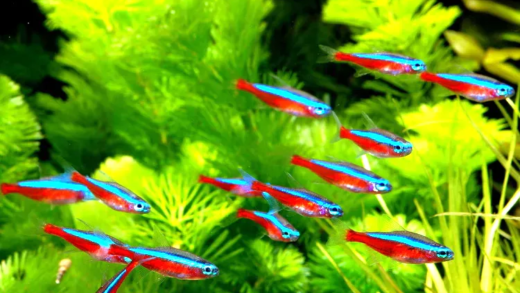Zorses are hybrids between zebras and horses, characterized by unique stripes and behavioral traits. They are rare in the wild, primarily existing in captivity for educational and research purposes. Their significance lies in genetic studies, contributing to our understanding of hybrid animals. Fun facts highlight their individuality and playful nature, making them intriguing to animal lovers. Zorses serve valuable roles in captivity, including educational and therapeutic uses.
What is a Zorse?
A zorse is a fascinating hybrid animal, a cross between a zebra and a horse. This unique creature inherits characteristics from both parents, resulting in a striking appearance and distinct behavior. Zorses are typically bred in captivity for various purposes, including research and education, due to their rarity in the wild.
How is a Zorse Created?
The creation of a zorse occurs through a process called crossbreeding, where a male zebra mates with a female horse. This pairing is intentional, as the genetic differences between the two species create a unique offspring. The zorse inherits the horse’s size and strength and the zebra’s distinctive stripes, resulting in a visually appealing animal. It’s important to note that zorses are usually sterile, meaning they cannot reproduce, which is a common trait among hybrid animals.
Physical Characteristics of Zorses
From stripes to size, the physical characteristics of zorses are what set them apart. Zorses often display:
- Stripes: These are typically more faint than those of a zebra, often appearing only on certain parts of their body.
- Size: Zorses tend to be larger than zebras but smaller than most horses, showcasing a blend of both species’ traits.
- Color: Their coat color can vary, with shades ranging from brown to gray, often mixed with zebra-like stripes.
This combination of traits makes zorses particularly interesting to those studying genetics and animal behavior.
Are Zorses Common in the Wild?
In the wild, zorses are quite rare. They do not occur naturally because zebras and horses have different habitats and social structures. Zebras typically live in savannas and grasslands, while horses are more adaptable to various environments. Because of this separation, zorses are primarily found in captivity, where breeders create them for educational purposes or as exotic pets. Their rarity makes them a subject of interest for conservationists and animal enthusiasts alike.
Behavioral Traits of Zorses
Zorses exhibit a blend of behaviors inherited from both zebras and horses. They often display the following traits:
- Social Interaction: Zorses tend to be more social than their zebra parents, often forming bonds with humans and other animals.
- Curiosity: Like horses, zorses are naturally curious creatures. They explore their environment and interact with objects and people.
- Temperament: Zorses can be more skittish than horses due to the zebra’s instinctive wariness of predators. This results in a unique blend of cautious and bold behaviors.
When observing zorses, it’s essential to recognize their need for socialization and mental stimulation. They thrive in environments where they can engage and interact, making them fascinating to study.
Can Zorses Reproduce?
Can zorses reproduce? Unfortunately, zorses are generally sterile. This sterility is a common characteristic among hybrids, resulting from the differing number of chromosomes between zebras and horses. While horses have 64 chromosomes and zebras have 44, the zorse ends up with an intermediate count, leading to reproductive complications. This means zorses cannot produce offspring, which limits their population growth and availability.
The inability of zorses to reproduce makes them an interesting case study in genetics, highlighting the complexities of hybridization. Researchers often examine zorse genetics to understand the implications of interspecies breeding and the evolutionary aspects of these animals.
Significance of Zorses in Genetics
Zorses hold a significant place in the study of genetics. Their unique genetic makeup provides insights into the complexities of hybrid animals. Here are some key points regarding their importance:
- Hybrid Vigor: Zorses exhibit hybrid vigor, meaning they often possess enhanced traits, such as strength and resilience, compared to their parent species.
- Genetic Diversity: Studying zorses contributes to understanding genetic diversity and the potential for new traits that could arise from hybridization.
- Conservation Insights: The breeding of zorses can offer clues about conservation strategies for endangered species, as it underscores the importance of genetic variation.
In conclusion, zorses are more than just a curiosity; they provide valuable information about genetics and the dynamics of species interaction. Their unique traits and behaviors make them a subject of interest for researchers and animal lovers alike.
Zorses in the Ecosystem
Zorses play a unique role in the ecosystem, primarily in captivity rather than in the wild. Since they are hybrids, their existence in natural habitats is nearly non-existent, which limits their ecological impact. However, studying zorses can help us understand how hybrid animals could influence biodiversity and species interactions. Here are some key points about zorses in relation to ecosystems:
- Hybrid Interactions: Zorses may offer insights into how hybrids can adapt and survive in various environments, potentially influencing local species dynamics.
- Genetic Studies: Research on zorses can help scientists learn about genetic diversity, which is crucial for the health of ecosystems.
- Educational Value: Zorses in zoos and educational facilities can raise awareness about conservation issues and the importance of genetic diversity in wildlife.
While zorses are not a part of the wild ecosystem, their study contributes to our understanding of animal biology and the importance of preserving genetic diversity.
Fun Facts About Zorses
Zorses are not just fascinating from a scientific perspective; they also have some quirky traits that make them interesting. Here are a few fun facts about these unique hybrids:
- Unique Stripes: Each zorse has a unique pattern of stripes, similar to a fingerprint, making them individually identifiable.
- Temperament: Zorses can be quite playful and curious, often displaying behaviors that mix the cautious nature of zebras with the sociable tendencies of horses.
- Size Variation: Zorses can vary significantly in size, depending on the horse parent, which can lead to a wide range of physical characteristics.
- Rare Sight: Due to their rarity, seeing a zorse in person is a treat for animal lovers, often sparking curiosity and excitement.
These fun facts highlight why zorses are a topic of interest in both scientific communities and among animal enthusiasts.
Zorses in Captivity
Zorses are primarily bred in captivity, where they are raised for various purposes. Understanding how zorses are managed in these settings is important for their welfare and the knowledge we gain from them. Here’s how zorses are typically raised and what roles they serve:
- Breeding Programs: Zorses are often bred in controlled environments to study their genetics and behaviors, contributing to our understanding of hybrid animals.
- Educational Use: Many zoos and wildlife parks feature zorses to educate the public about hybrid animals and the importance of conservation.
- Therapeutic Roles: Some facilities use zorses in animal-assisted therapy programs due to their gentle demeanor and unique appearance, providing emotional support to individuals.
The management of zorses in captivity focuses on ensuring their well-being while also providing valuable educational and research opportunities.





Comments are closed.